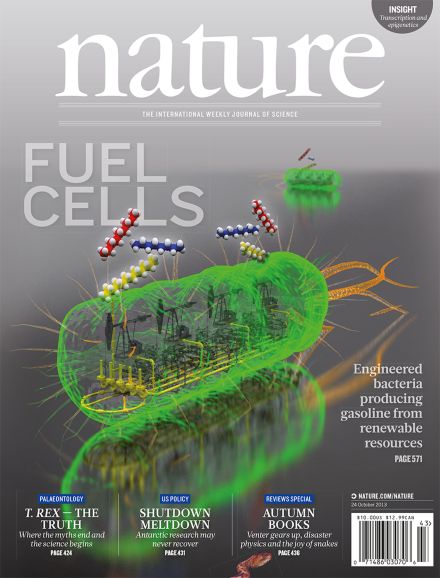Volume 502 Issue 7472, 24 October 2013
Editorial
World View
Research Highlights
Seven Days
Correction
News
Correction
News Feature
Comment
Autumn Books
Correspondence
Obituary
News & Views
-
Small-brained and big-mouthed
Collection:

